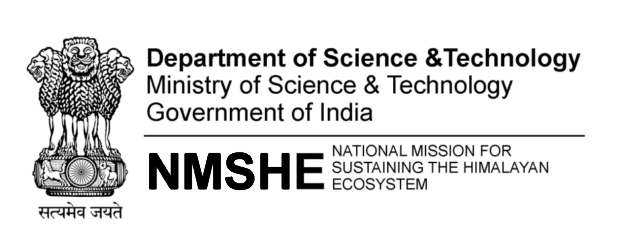


Meghalaya State Profile (Geographic, climate, & socio-economic etc.)
Meghalaya literally meaning “The Adobe of Clouds” attained full statehood as the 21st state of India on 21st January’1972 with Shillong as the State capital. It neighbours Assam in the north and east and is surrounded by Bangladesh in the west and south by a stretch of about 400 km of the international boundary. At present, Meghalaya comprises eleven districts: East Garo Hills, East Jaintia Hills, East Khasi Hills, North Garo Hills, Ri-Bhoi, South Garo Hills, South West Garo Hills, South West Khasi Hills, West Garo Hills, West Jaintia Hills and the West Khasi Hills. Meghalaya is basically an Agrarian State with about 80% of its total population depending entirely on agriculture for their livelihood. In spite of favourable rainfall pattern and other climatic conditions, agriculture is not highly remunerative for the people due to rugged topography and less productive soils. The valleys and the border areas forming parts of the Brahmaputra valley are the few productive sites. The topography of the land also governs the agricultural practices in this state e.g., in the plains areas of this state the farmers practice permanent cultivation whereas along the slopes of the hills they practice shifting cultivation. The major food crops are Rice, Wheat, Maize, Millets and Pulses (Gram, Tur etc.). Among the cash crops, Oil,-seeds (Rape and Mustard, Castor, Sesamum and Soya bean), Cotton, Jute, Mesta Potato and Sugarcane, Areca nut, Cashew nut are the main crops. Banana, Papaya, Pineapple, Citrus, Temperate and Miscellaneous fruits are the main horticulture crops. Other commercial crops are Tobacco, Turmeric, Sweet Potato, Chilies, Tapioca, and Ginger.
Due to its varied topographic, edaphic and climatic conditions, the state is endowed with great biodiversity values of flora and fauna. The luxuriant and varied growth of vegetation and other floral elements consists of tropical, sub-tropical, and temperate forests. The tropical forests are confined to 1200m elevation and temperate forests are found between 1200 and 1800m elevations. Tropical forests consist of evergreen, semi-evergreen, deciduous, sub-tropical pine forest and grasslands. Sub-montane areas of the Southern parts of Khasi and Jaintia hills and part of South Garo Hills have mostly evergreen and semi-evergreen forests. The Sal Forests, which occupy the northern part of Khasi Hills and the border areas of Garo Hills, are of very fine quality. The Rongrenggiri Reserve in the Garo Hills is considered to be among the best Sal reserves in India. The sub-tropical pine forests are confined in some parts of the central Uplands of the Khasi and Jaintia Hills. The bamboo forests grow within the sal and evergreen and semi-evergreen forests. Meghalaya has 14 genera and 36 species of bamboo. The temperate forests occur above 1800 m altitude where the ‘Sacred Groves’, as dense virgin forests with distinct stratification represent the ‘relic’ flora of the region. The state is also bestowed with many tree, shrubs and herbs species that are used as aromatic food and medicinal plants. Apart from this, the state is also very rich in several varieties of colorful orchids. Almost 98 genera and 352 species grow as terrestrial and epiphytic orchids in the state. Meghalaya possess notable forests cover, stretched over an area of 17,217 km2 constituting 76.76 % of State’s geographical area (ISFR, FSI 2015). The recorded forest area of the State is 9,496 km2 constituting 42.34% of State’s geographical area.
The climatic conditions of Meghalaya vary according to the altitudinal changes occurring over the north-western part of India and the Bay of Bengal (formation of high pressure) and the warm and moist wind coming from the south or the south-west. Meghalaya receives most of its rainfall from the south-west monsoon winds. Khasi and Jaintia Hills is uniquely pleasant while in Garo Hills the summer is humid and warm, and winter is pleasant. During winters, ground frost is common in the table land of Khasi and Jaintia hills. The Mawsynram-Sohra belt in this region has the highest rainfall record in the world (1392 cm). The average annual rainfall in the south-west is about 400 cm, in the central part between 300-400 cm and in the north it ranges from 250 to 300 cm. More than 75% of the rainfall is received within 6 months from April to September. Winter months with only 6 cm rainfall are almost dry. The state experiences three distinct seasons in Meghalaya. The cold season from October to February records the mean minimum temperature as low as 3.6 ºC. The summer season from March to May records the highest mean maximum temperature (33 ºC) is recorded in the month of April. The monsoon season is the longest from May until September.